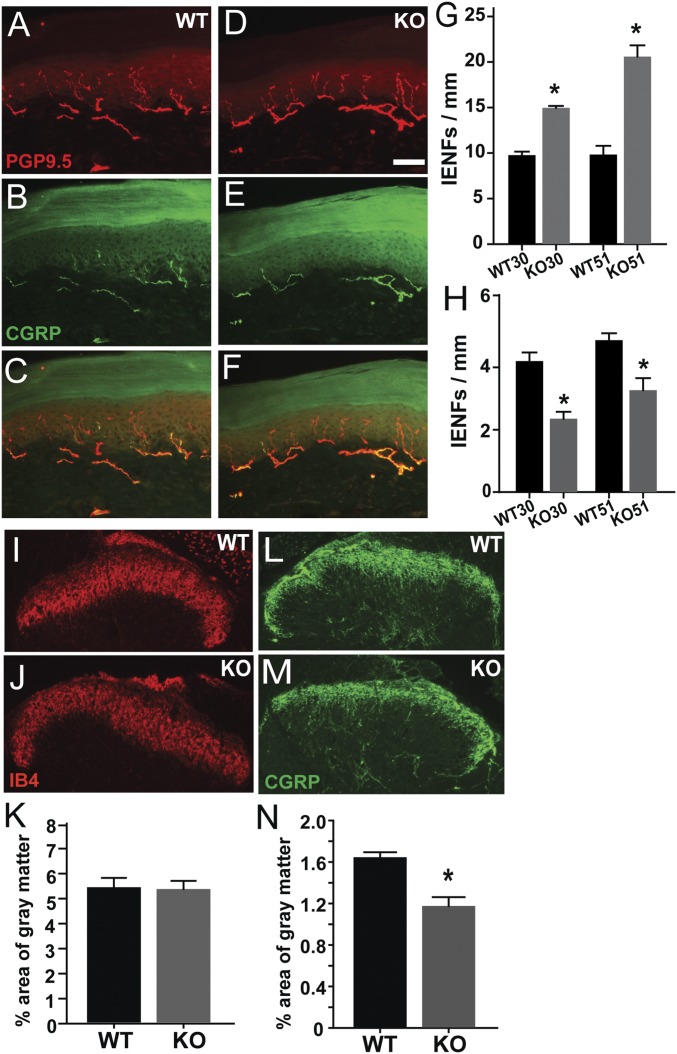Fig. 2.
MeCP2 KO affects peptidergic and nonpeptidergic sensory axons differentially in vivo. (A–H) Footpad innervation. WT rat footpad section immunostained for PGP9.5 (A) and CGRP (B and C), and Mecp2−/y (KO) rat section stained for PGP9.5 (D) and CGRP (E and F) at 51 d. Quantitative analyses show nonpeptidergic innervation (PGP9.5+, CGRP−) is increased in KO skin at 30 and 51 d (G: *P = 0.01, WT30 vs. KO30; P = 0.001, WT51 vs. KO51; P = 0.001, KO30 vs. KO51 = 0.001). CGRP-ir peptidergic innervation is reduced (H: *P = 0.003, WT30 vs. KO30; P < 0.001, WT51 vs. KO51; P = 0.05, KO30 vs. KO51; 30 d, n = 4 WT, 5 KO; 51 d, n = 8 WT, 9 KO) (I–N) Spinal cord innervation. IB4 staining of the spinal dorsal horn reveals nonpeptidergic innervation in wild type and KO rats (I and J), which is comparable in both genotypes (K). CGRP immunostaining identifies peptidergic fibers (L and M), and quantitation shows that these are reduced in the KO rat (N, *P = 0.003, n = 5 WT, 6 KO). (Scale bar in D, 50 µm; applies to all micrographs.)

